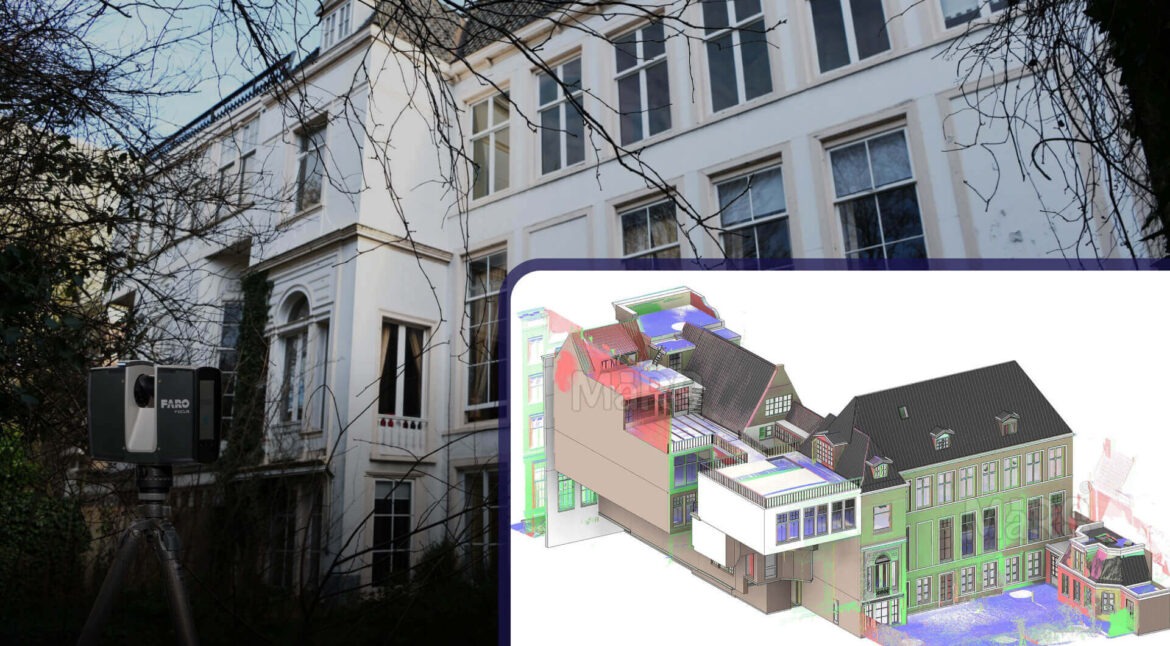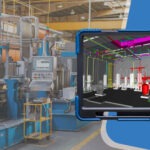In the ever-evolving real estate market, technology plays a crucial role in driving efficiency, accuracy, and innovation. One of the most transformative technologies in recent years is Scan to BIM (Building Information Modeling). This powerful tool is revolutionizing how we manage, develop, and interact with real estate properties. Here’s an in-depth look at how Scan to BIM reshapes the industry.
Understanding Scan to BIM
Scan to BIM refers to the process of using 3D laser scanning technology to capture accurate and detailed data of existing structures and convert it into a digital Building Information Model (BIM). This model represents a comprehensive digital replica of a building or infrastructure, incorporating geometric, spatial, and contextual information.
Key Concepts and Components
- 3D Laser Scanning: This technology captures precise measurements of a building’s exterior and interior by recording millions of points of data. The result is a point cloud, which is the foundational data for creating the BIM model.
- Point Cloud Data: A collection of data points in a 3D coordinate system that represents the scanned object. This data is used to generate detailed and accurate 3D models.
- BIM Modeling: The process of creating a digital representation of the physical and functional characteristics of a building. BIM models include not just geometric data but also information about materials, structural elements, and building systems.
- Revit and Other BIM Software: Industry-standard software like Autodesk Revit is used to develop and manage BIM models. These tools help in integrating the scanned data into a cohesive model with rich information.
Role of Scan to BIM in Real Estate
Scan to BIM services is transforming the real estate market by offering several key benefits:
- Accurate As-Built Models: Traditional property documentation often suffers from inaccuracies. Scan to BIM provides a precise and detailed digital model that accurately reflects the as-built condition of a property, reducing discrepancies and errors.
- Enhanced Property Management: For facility managers, having an up-to-date BIM model simplifies maintenance, renovations, and space management. It allows for better planning and execution of building operations.
- Efficient Decision-Making: Real estate developers, investors, and stakeholders benefit from having detailed BIM models. These models facilitate informed decision-making regarding property investments, renovations, and space utilization.
How Scan to BIM is Revolutionizing the Real Estate Market
Scan to BIM (Building Information Modeling) is having a significant impact on the real estate market in several ways:
- Enhanced Accurateness: Scan to BIM technology uses 3D laser scanning to capture precise measurements and details of existing structures. This results in highly accurate digital models that reflect the true as-built conditions, reducing errors and omissions in property documentation.
- Improved Property Management: BIM models can help owners and managers of real estate properties improve maintenance and enhancements. The detailed models provide valuable insights into the building’s infrastructure, making it easier to plan and execute repairs or upgrades.
- Faster Decision-Making: With up-to-date and detailed digital models, stakeholders can make informed decisions more quickly. This is especially useful for assessing the potential of properties, planning renovations, or managing large portfolios of real estate assets.
- Enhanced Visualization: BIM models offer advanced visualization capabilities, including 3D walkthroughs and virtual reality experiences. This helps prospective buyers or tenants better understand the space and make more informed purchasing or leasing decisions.
- Increased Efficiency: The use of BIM can streamline various processes, from design and construction to facility management. This efficiency translates into cost savings and faster project completion, which can be a competitive advantage in the real estate market.
- Sustainability and Energy Efficiency: BIM models can be used to analyze and improve a building’s energy performance. This supports sustainability goals and helps meet regulatory requirements, making properties more attractive to environmentally conscious buyers and tenants.
- Better Risk Management: Detailed BIM models help identify potential issues and conflicts early in the planning or construction phases, reducing the risk of costly changes or delays.
Overall, Scan to BIM technology is transforming the real estate market by providing greater accuracy, efficiency, and insights, which enhances property management and decision-making processes.
Applications of Scan to BIM in Different Real Estate Sectors
- Commercial Real Estate: In commercial properties, Scan to BIM aids in space planning, tenant fit-outs, and property management. Accurate models help in visualizing potential modifications and managing large facilities efficiently.
- Residential Real Estate: For residential projects, BIM models provide prospective buyers with detailed insights into the property’s layout and features. This can enhance marketing efforts and accelerate sales.
- Heritage and Historic Buildings: Scan to BIM is particularly valuable for documenting and preserving historic structures. Detailed models facilitate restoration and conservation efforts while maintaining historical accuracy.
- Healthcare and Educational Facilities: In specialized buildings like hospitals and universities, BIM models help in managing complex systems and planning for future expansions or renovations.
Read our Recent Blog: Scan to BIM vs. Traditional Methods: Which is Best for Your Project?
Implementing Scan to BIM in the Real Estate Industry
- Integration with Existing Processes: To successfully implement Scan to BIM, real estate professionals need to integrate this technology with their existing workflows. This includes coordinating with surveyors, architects, and BIM specialists.
- Training and Adoption: Ensuring that staff are trained in using BIM software and understanding scan data is crucial for maximizing the benefits of Scan to BIM.
- Data Management: Proper management of point cloud data and BIM models is essential. This involves organizing data, maintaining version control, and ensuring data security.
- Collaboration: Effective collaboration between various stakeholders (architects, engineers, property managers) is key to leveraging Scan to BIM for optimal results.
Conclusion
Scan to BIM is not just a technological advancement but a game-changer in the real estate market. By providing accurate, detailed, and actionable data, it enhances property management, supports informed decision-making, and drives efficiency across various real estate sectors. As the real estate industry continues to embrace digital transformation, Scan to BIM stands out as a powerful tool that is reshaping the way we interact with and manage our built environment. Whether you are a property developer, facility manager, or investor, understanding and leveraging Scan to BIM can give you a competitive edge in today’s dynamic market.
FAQs
What is the purpose of Scan to BIM in real estate?
Scan to BIM is used in real estate to create accurate 3D models of existing buildings. These models are essential for renovations, facility management, and planning, helping stakeholders make better decisions based on precise data.
What are the benefits of using Scan to BIM in real estate?
The benefits of using Scan to BIM in real estate include enhanced accuracy in as-built documentation, improved visualization for buyers and stakeholders, cost savings through reduced errors, and better coordination during construction or renovation projects.
How does Scan to BIM affect real estate investment decisions?
Scan to BIM affects real estate investment decisions by providing investors with detailed insights into a property’s condition and potential. Accurate BIM models help investors assess risks, plan renovations, and make informed purchasing decisions.
How is Scan to BIM implemented in real estate projects?
Scan to BIM is implemented in real estate projects by scanning the existing structure with 3D laser technology, creating a point cloud, and converting it into a BIM model using specialized software like Autodesk Revit.
How does Scan to BIM ensure accuracy in real estate projects?
Scan to BIM ensures accuracy by capturing millions of data points through 3D laser scanning, which are then converted into precise BIM models. This reduces the likelihood of errors and discrepancies in documentation and construction.
What is the future of Scan to BIM in the real estate market?
With developments in scanning technology, AI integration, and enhanced software capabilities, the real estate industry appears to have a bright future for Scan to BIM. This process should become more accurate, faster, and more accessible for a wider range of projects.
What role does Scan to BIM play in property renovations?
Scan to BIM plays a critical role in property renovations by providing accurate as-built models that reflect the current state of a building. This ensures that renovation plans are based on precise data, minimizing the risk of costly errors and ensuring seamless integration with existing structures.




